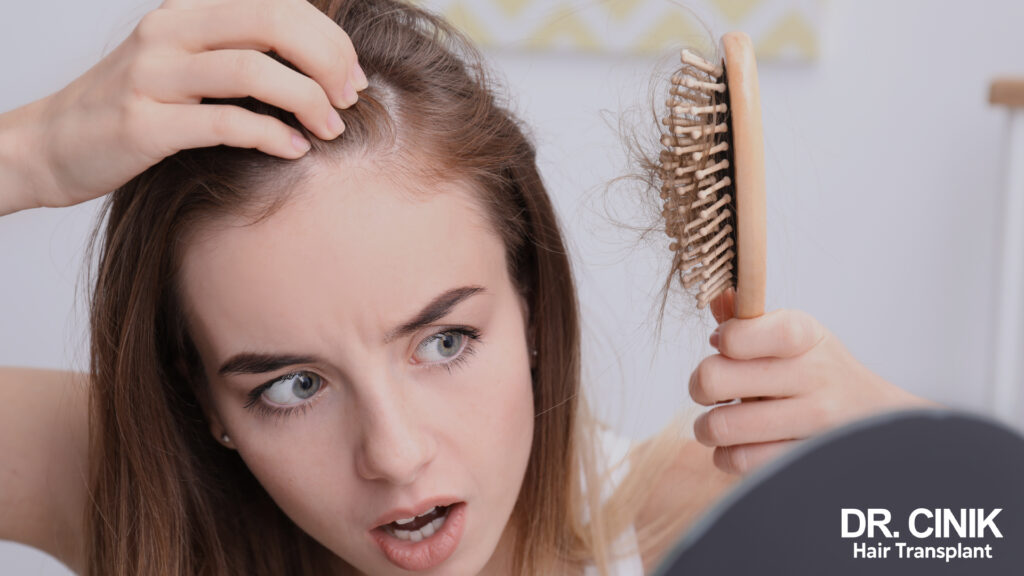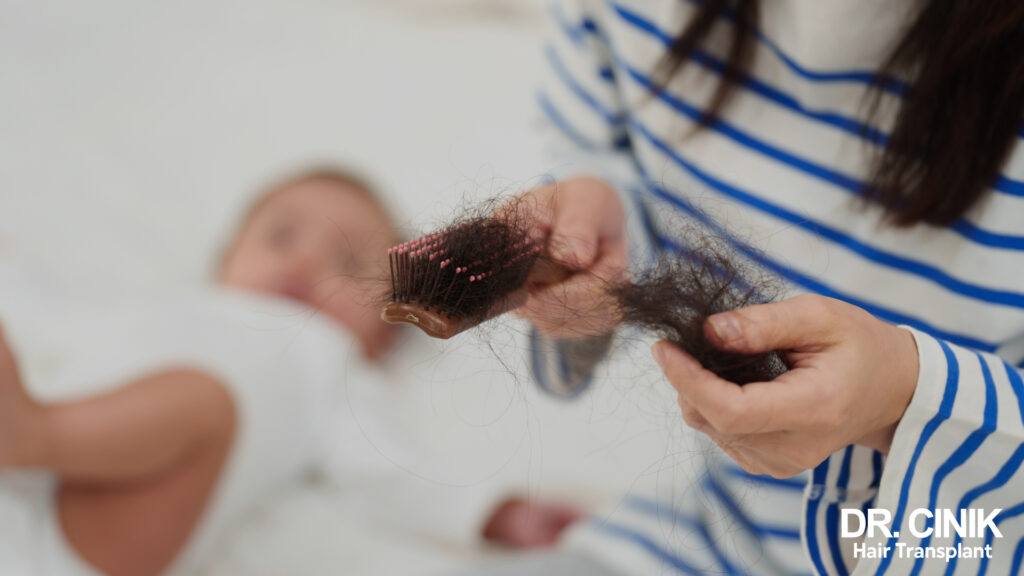Androgenetic alopecia in women (Female Pattern Baldness): causes and possible treatments
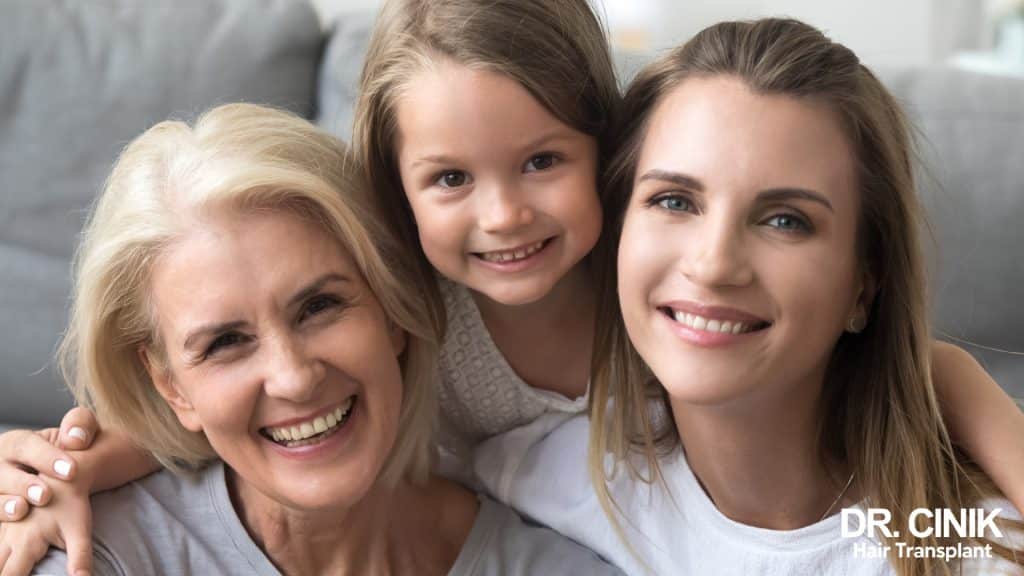
Summary
Hair loss can either be a temporary issue or evolve into a chronic condition. Despite not being life-threatening, they can cause significant stress and anxiety, primarily due to their impact on appearance. To fully comprehend these phenomena, it’s crucial to understand their underlying causes, potential triggers, and observable symptoms.
What is female pattern baldness?
Female androgenetic alopecia, often called female pattern baldness, is a non-life-threatening condition resulting in hair thinning predominantly at the top of the head. Typically, this condition doesn’t affect the hairline, temples, or back of the head. Thus these areas tend to maintain their hair. It’s worth mentioning that this type of hair loss rarely progresses to complete baldness.
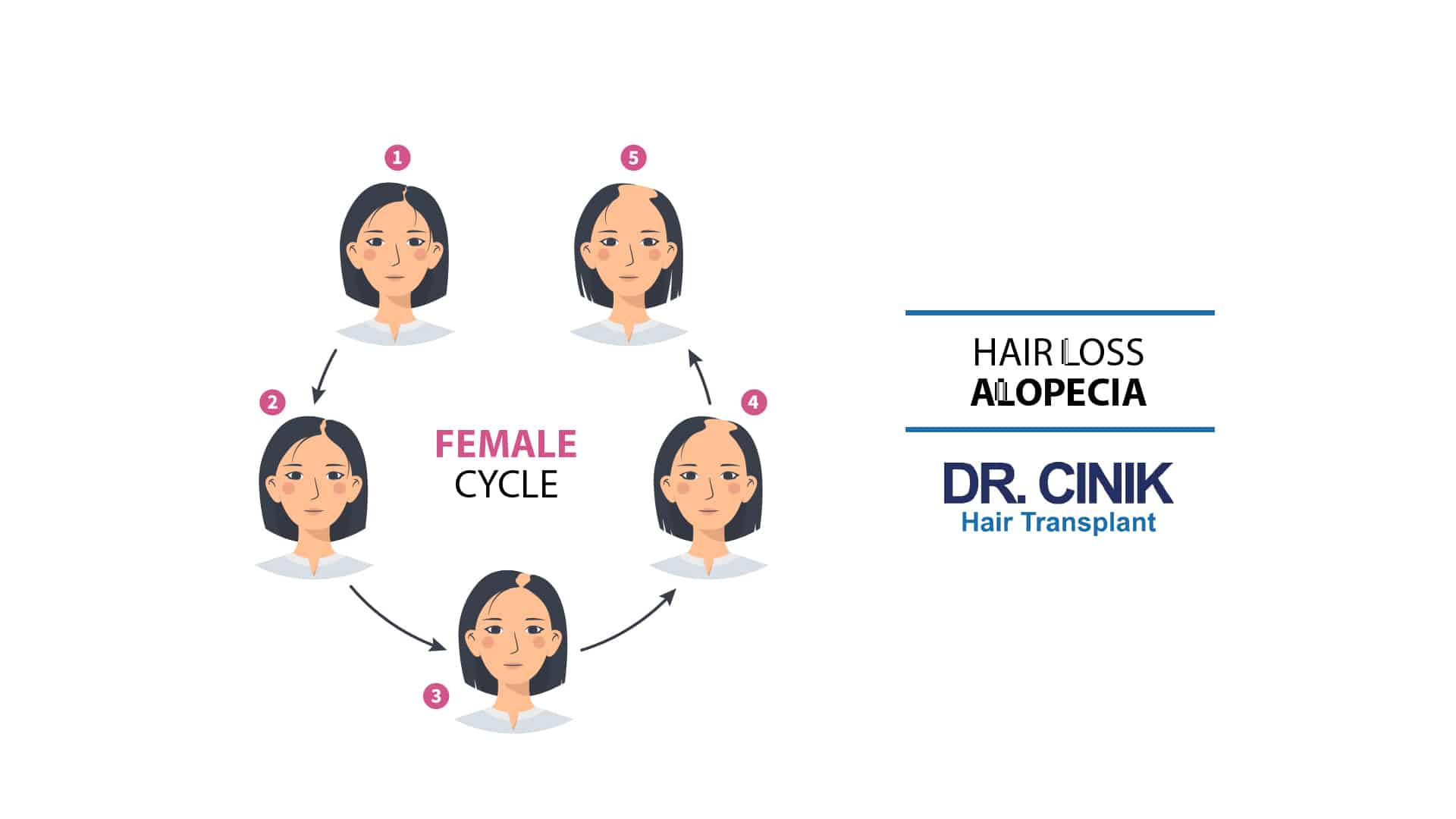
While androgenetic alopecia is not a medical problem, it does have psychological impacts, especially stress and low self-esteem. Fortunately, there are effective treatments for this condition. There are also several solutions for living better with alopecia.
Causes of androgenetic alopecia in women
Multiple factors influence the development of androgenetic alopecia in women. Genetic and hormonal elements primarily play a key role, which specific physiological and environmental disturbances can further exacerbate.
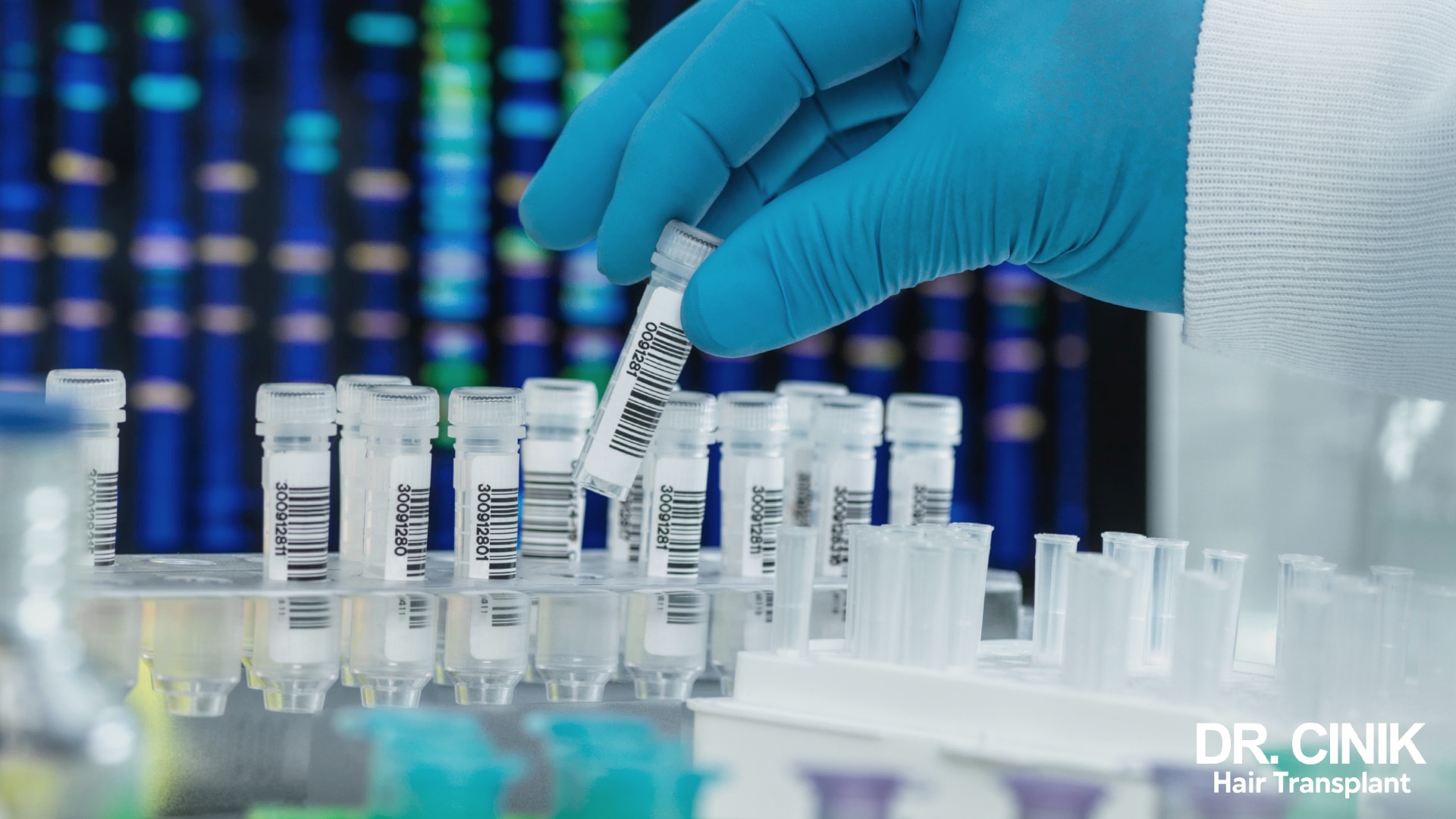
Androgenetic predisposition
Androgenetic predisposition refers to a patient’s scalp having an increased sensitivity to androgens, which are male hormones. The adrenal glands and ovaries naturally produce these hormones in women, albeit at significantly lower levels (up to 20 times less) than in men. Two contributing factors can play a part in the onset of alopecia. The first is the hair follicles’ sensitivity to androgens, and the second is the patient’s genetic predisposition affecting their hair. If both conditions are met, the androgens produced may be sufficient to instigate hair loss.
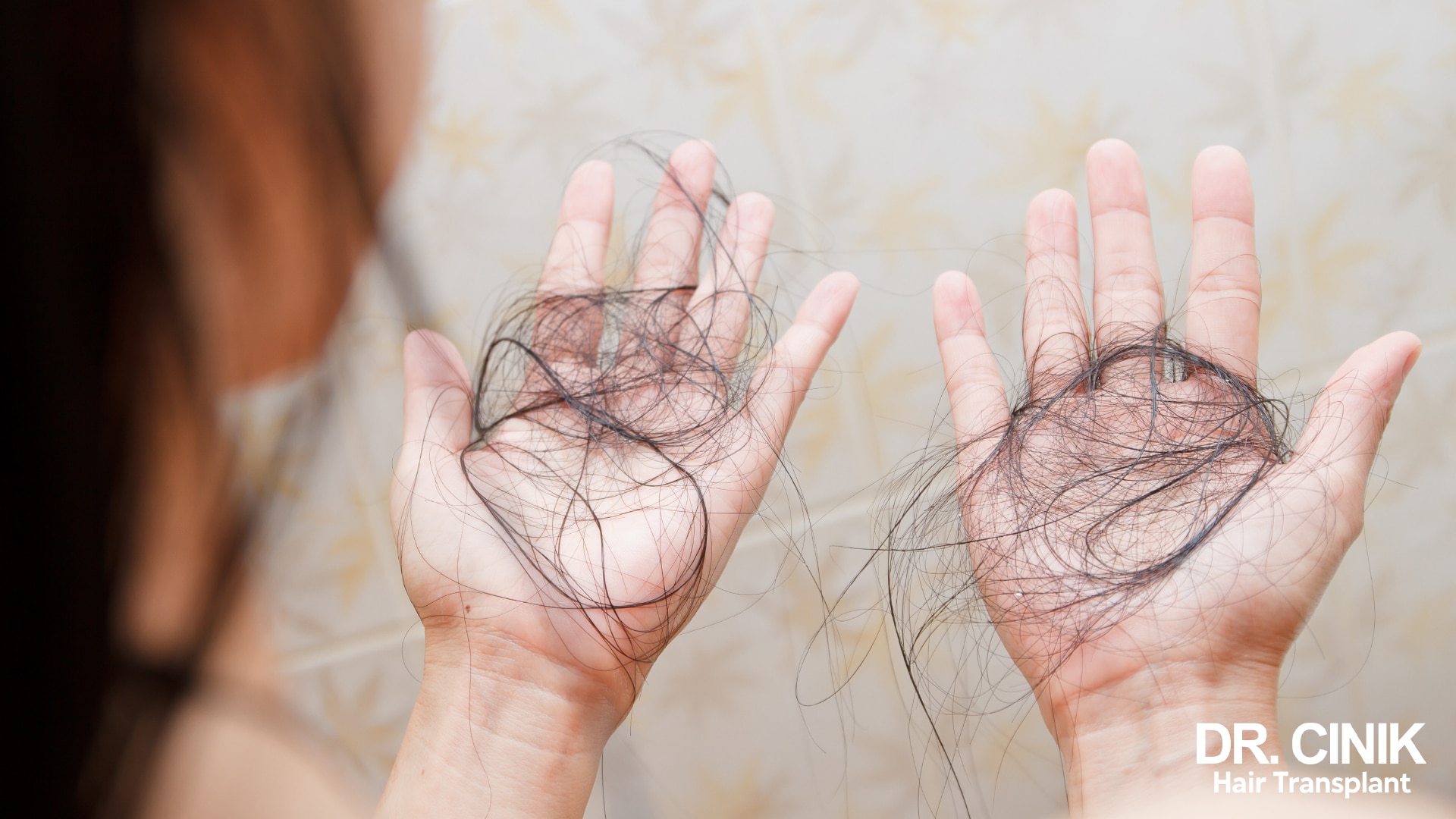
Hormonal factors
Typically, androgenetic alopecia in women manifests during specific life stages: puberty, pregnancy, perimenopause, or menopause. Each stage is characterised by significant hormonal changes in the female body, which can potentially contribute to the onset of hair loss.
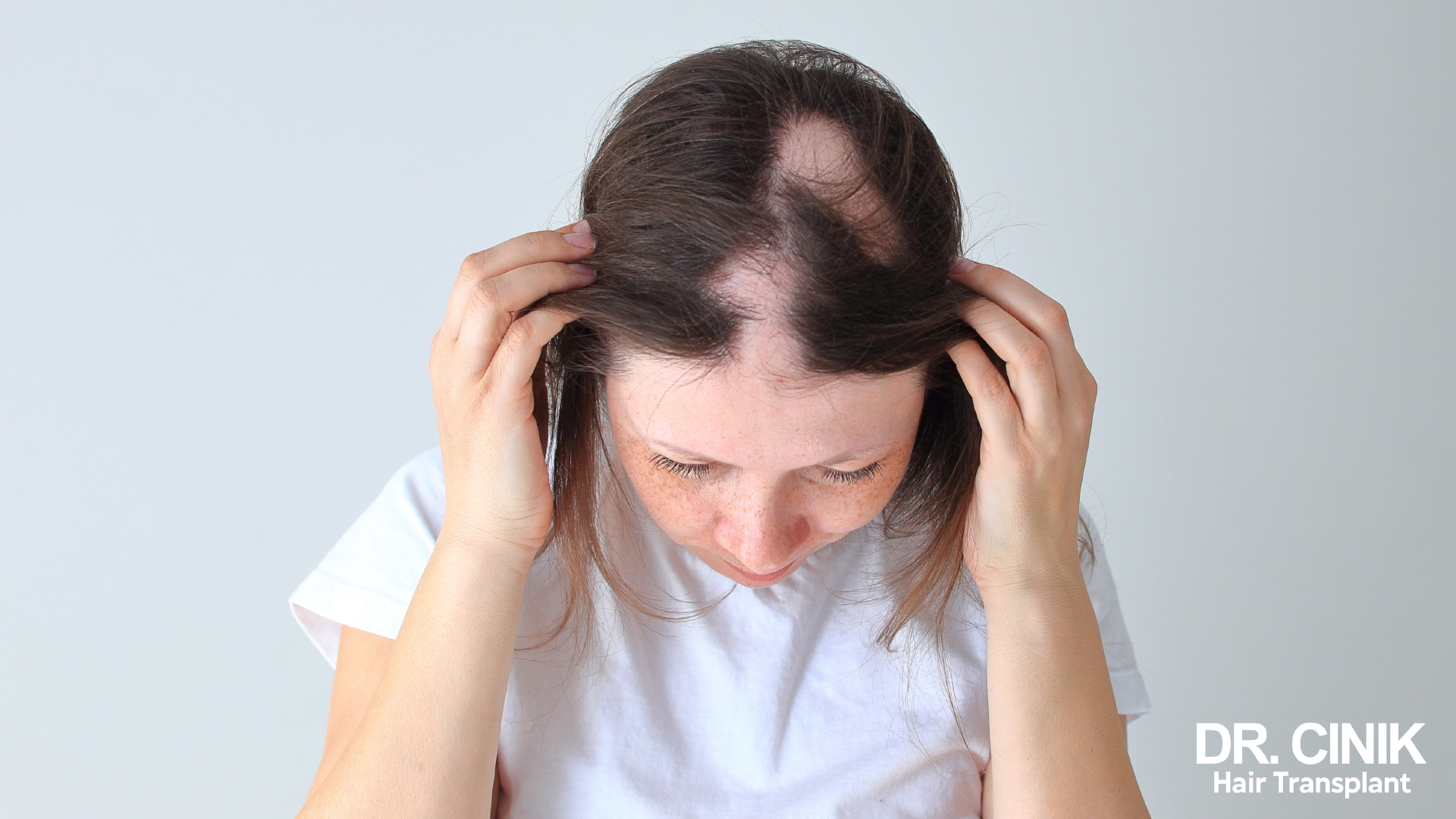
Aggravating factors
Lastly, psychological and behavioural factors like eating disorders or prolonged stress can also contribute to hair loss. In the case of eating disorders, nutritional deficiencies and physical stress on the body can intensify hair loss. Similarly, sustained periods of stress may lead to an acceleration of hair shedding.
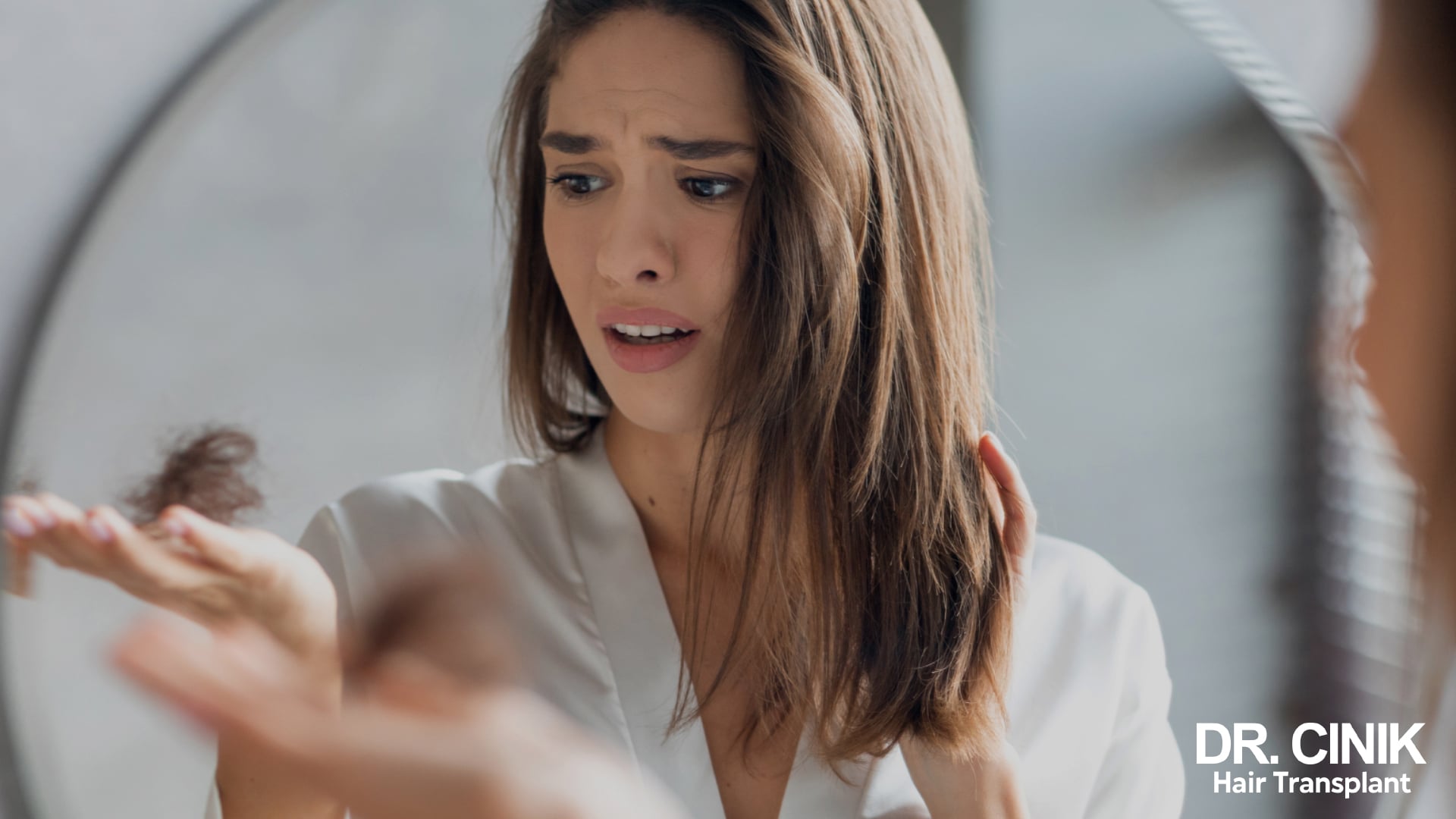
The symptoms of androgenetic alopecia in women
Androgenetic alopecia can be recognised by several symptoms. It manifests itself in different ways depending on the stage of development. It also differs from other types of hair disease.
The different stages of female pattern baldness
The Agnes Ludwig scale indicates several levels of evolution for female androgenetic alopecia. It is essential to know the evolution of baldness to know what therapeutic approach to consider, adopt good eating habits as soon as possible, and deal with problematic psychological problems. Female pattern baldness can occur in three stages:

- Stage 1: Alopecia initially presents as gradual thinning on the top of the head. During this stage, the patient may notice the scalp beginning to show through the hair in this area.
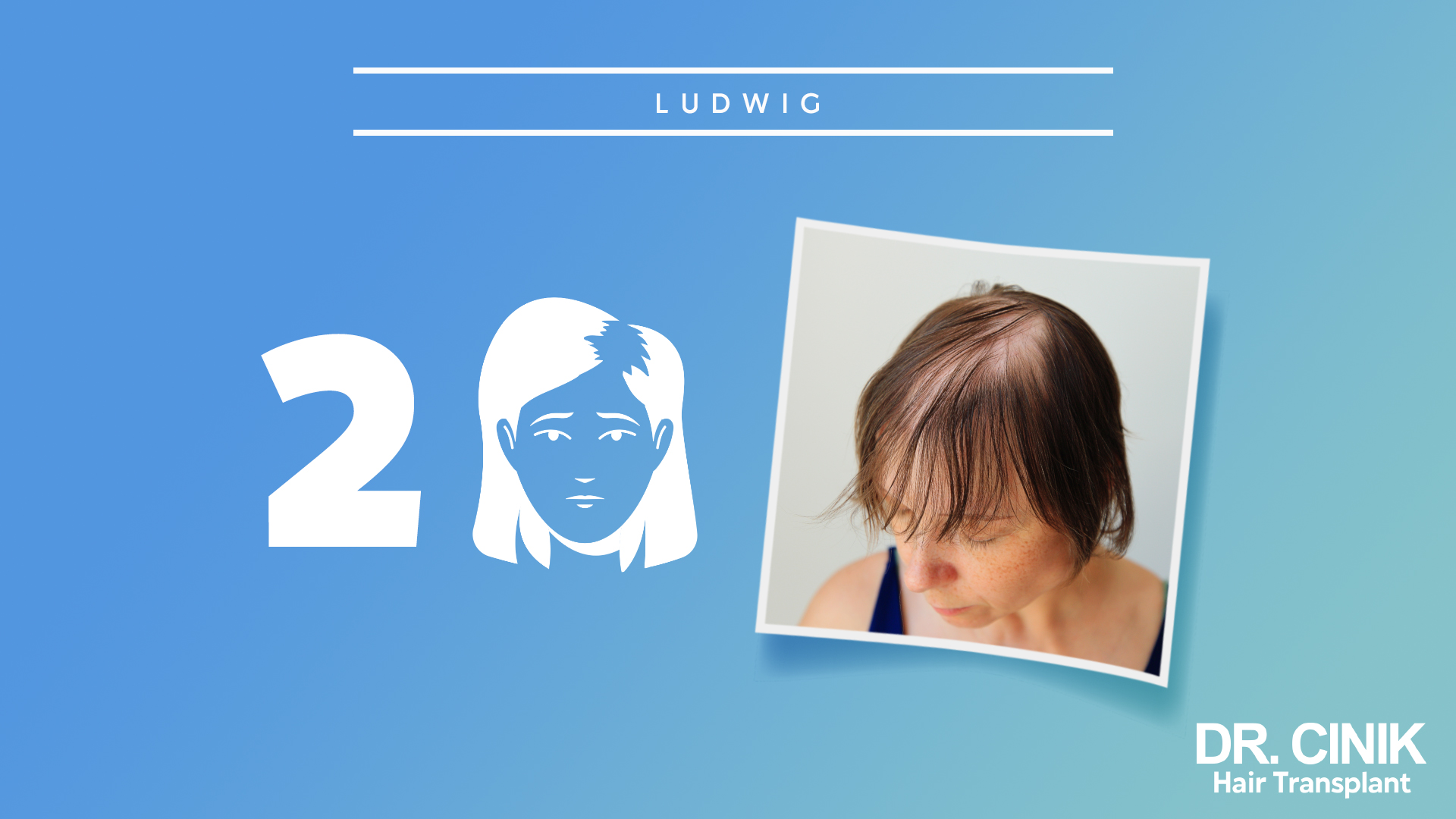
- Stage 2: As the condition progresses to the second stage, the thinning of the hair intensifies across the central part of the head. The hair loss becomes more noticeable, and short, grey hair strands may begin to appear on the top of the head.
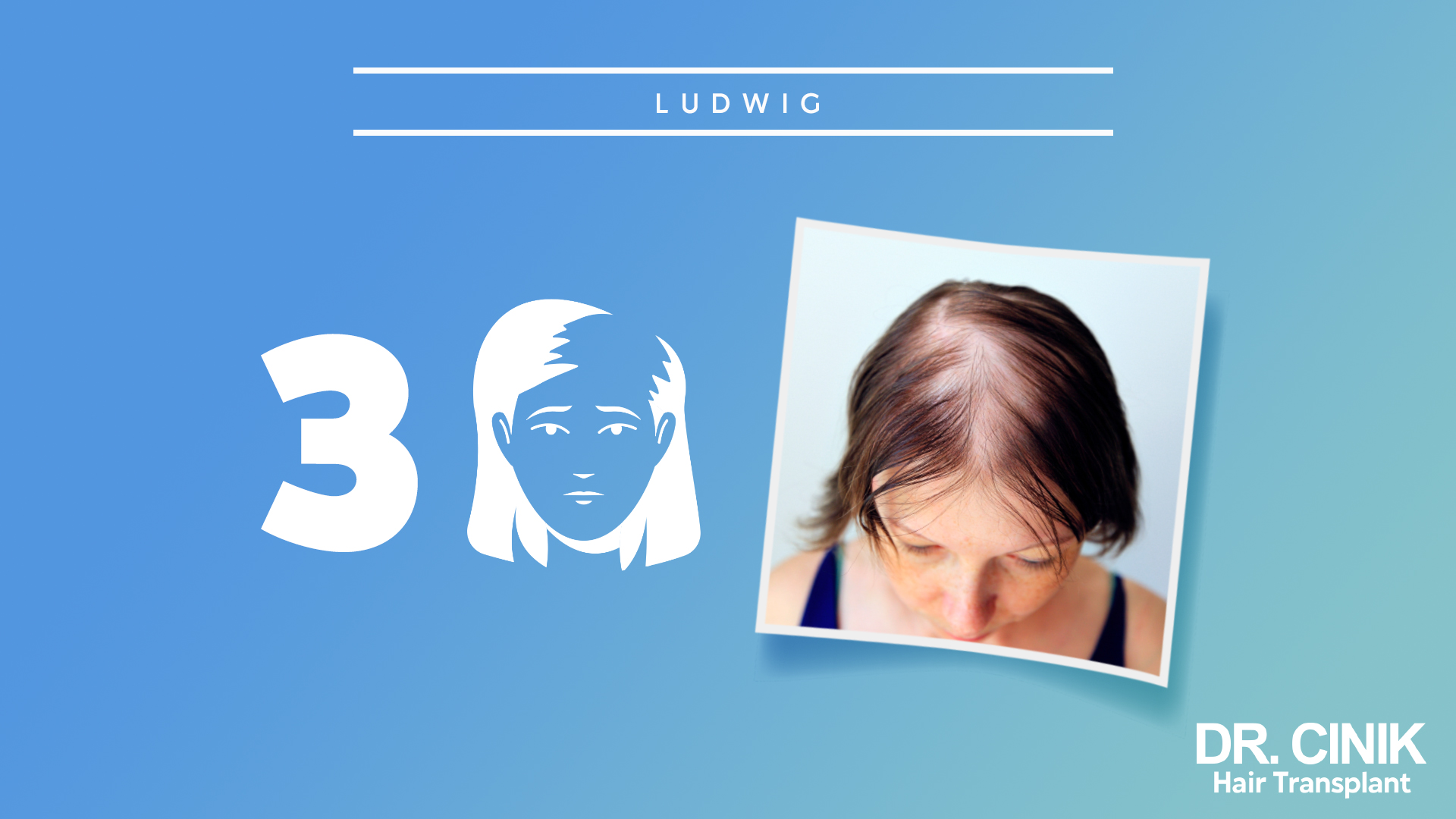
- Stage 3: In the final stage, the middle parting is almost devoid of hair, and the hairline starts to recede.
Signs that may alert you
To identify androgenetic alopecia, one must be mindful of specific signs and the timing of their occurrence. Significant hair loss resulting in patches and visible thinning of the scalp are the primary warning indicators. If a reduction in hair volume is observed, it might warrant concern. These symptoms could be associated with transient hair loss. However, if they arise during periods of hormonal fluctuation, such as puberty, pregnancy, or menopause, they may signal the onset of pattern hair loss.
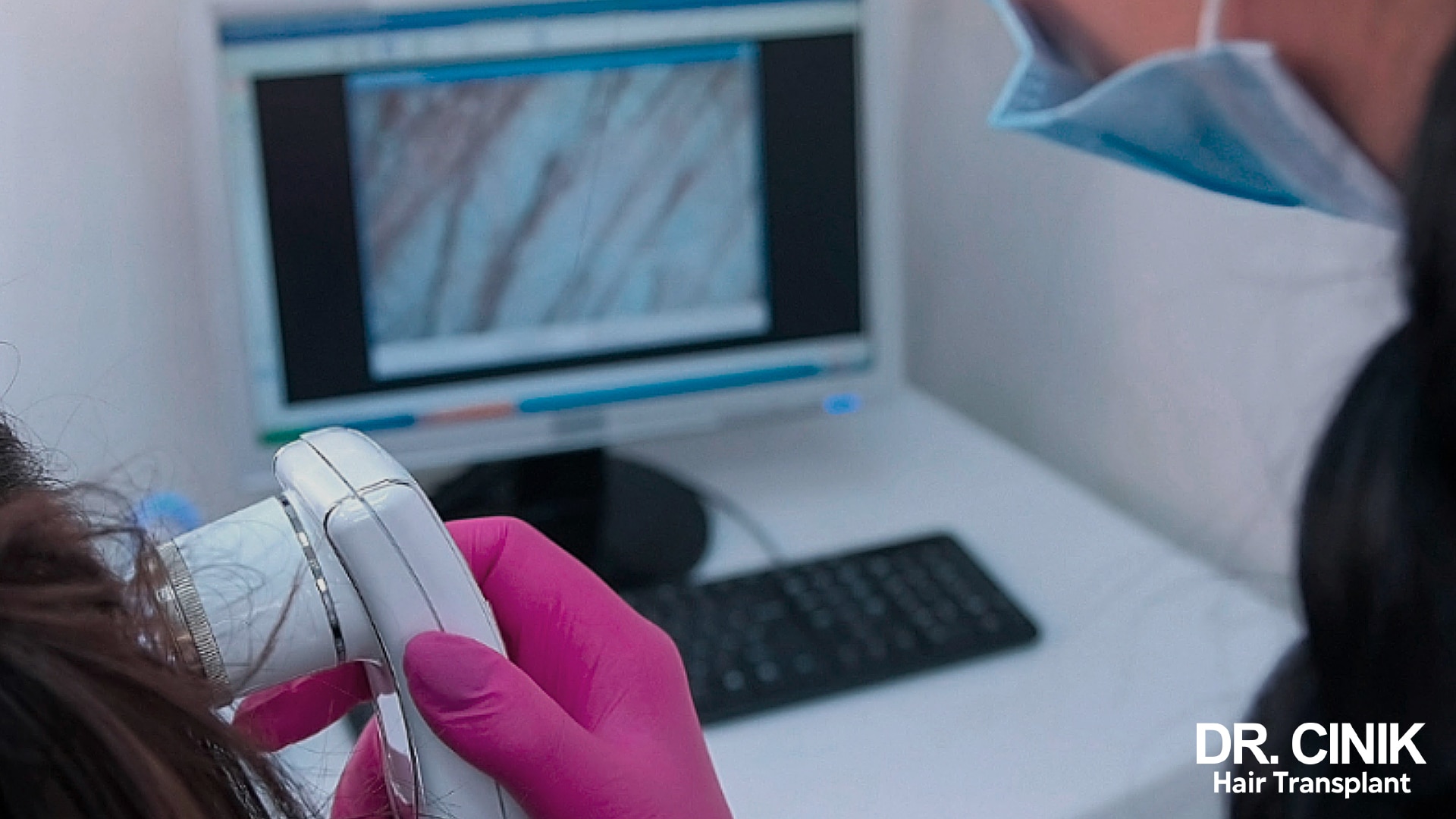
The difference with other types of alopecia
It’s important to note that not all instances of hair loss necessarily point to androgenetic alopecia. For instance, it could be a case of telogen effluvium, which results in widespread but often temporary hair loss that usually resolves without intervention. Hair loss can also be a symptom of alopecia areata, which causes abrupt hair loss in patches, unlike the progressive nature of androgenetic alopecia. In another variant, known as alopecia universalis, both body and facial hair are also affected by hair loss.
Treatments for androgenetic alopecia in women: benefits and effectiveness
Several treatments have been developed to combat androgenetic alopecia in women. They either slow down hair loss or completely treat baldness.
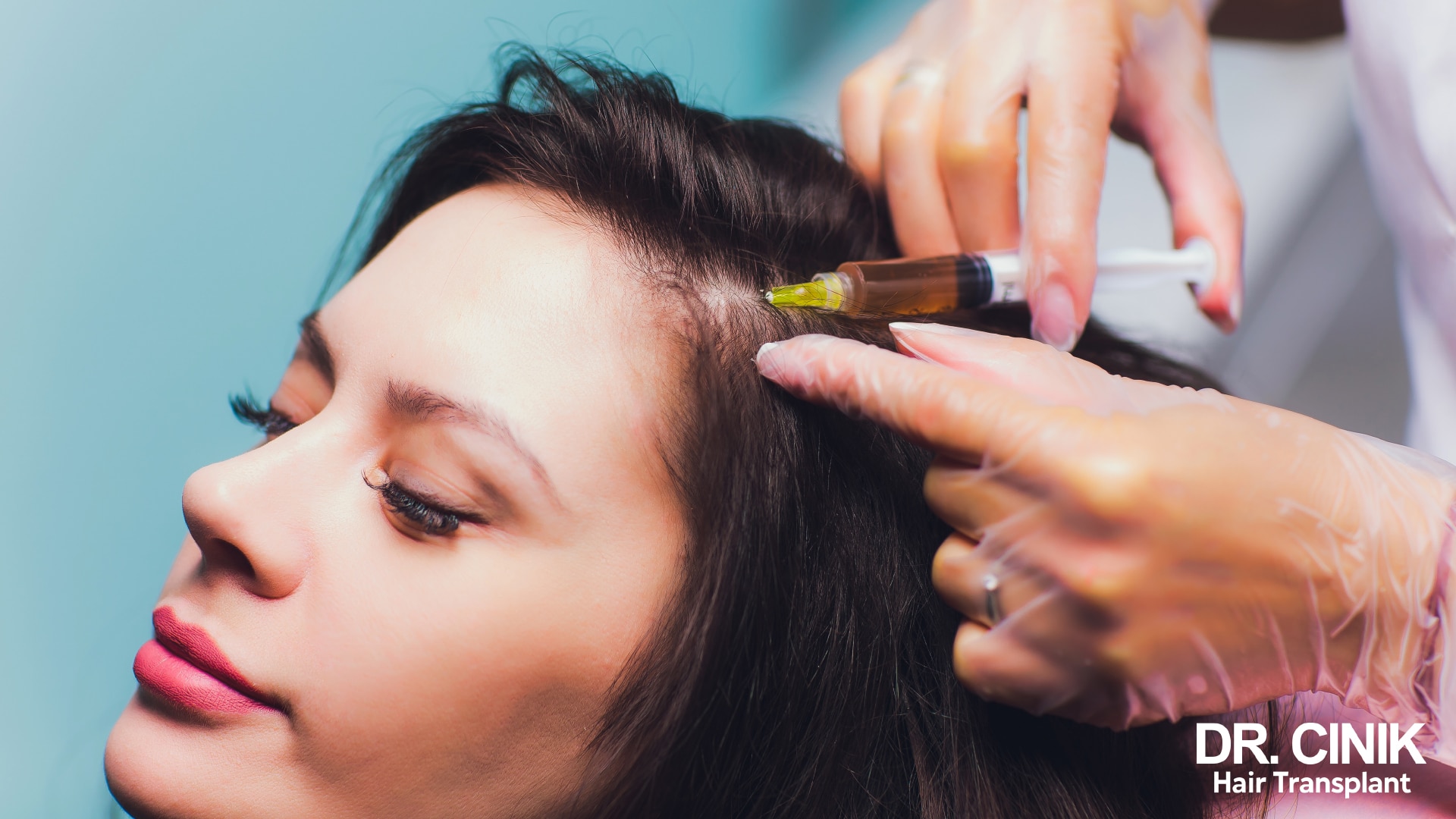
PRP treatment
PRP (Platelet Rich Plasma) treatment consists of several injections to stimulate hair growth. Platelet growth factors are injected directly into the scalp. They are strengthened during the hair growth phase and can limit the premature death of the hair cells.
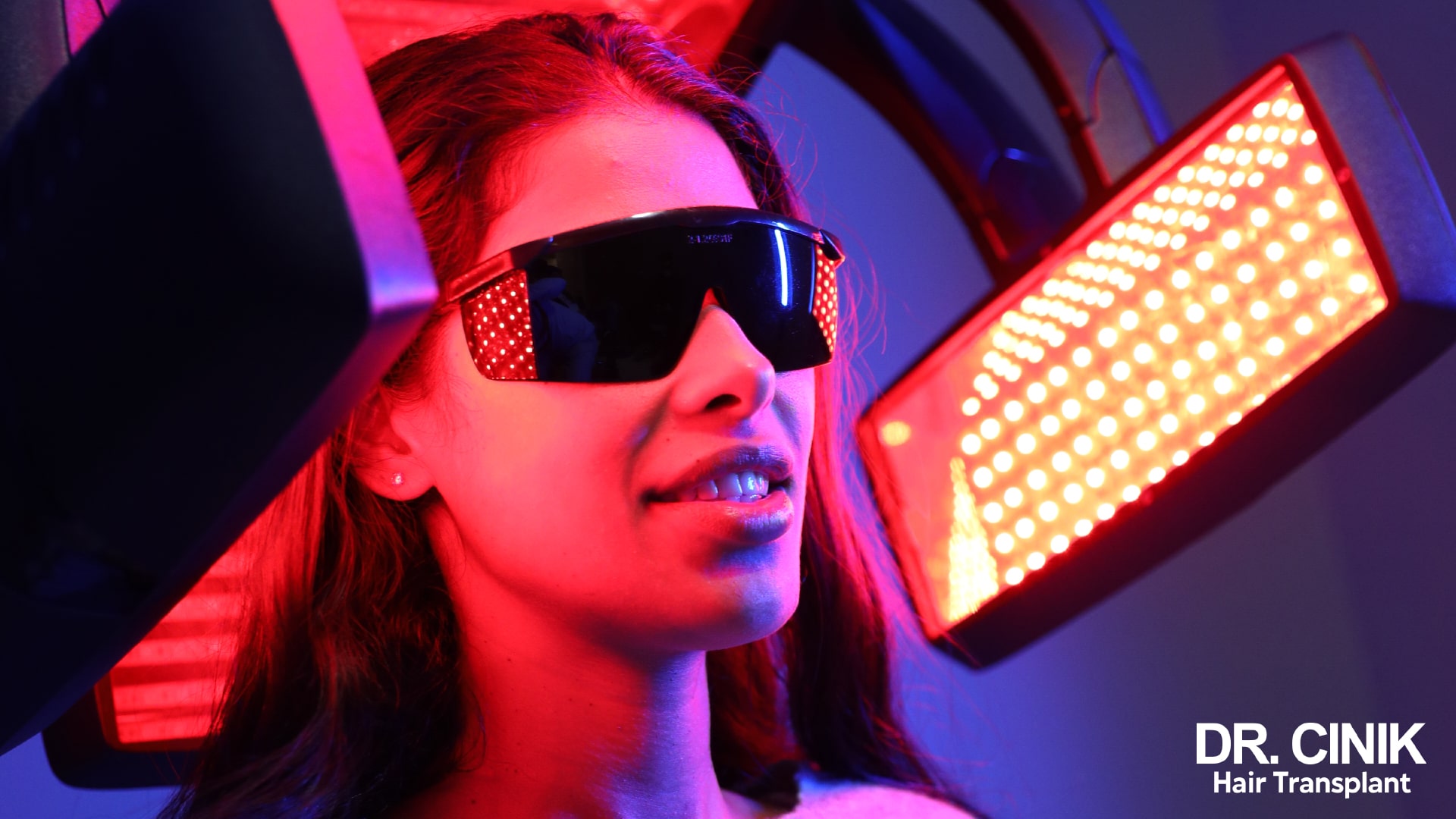
Laser hair treatment
Laser hair treatment targets the areas most prone to hair loss: the top of the head, the temples and the forehead. This treatment is based on the principle of photobiomodulation, which consists of providing the energy needed to regenerate the hair follicles. The procedure is carried out using a low-intensity laser that stimulates the activity of the hair follicles. It takes an average of 20 minutes and is not painful. In addition, the laser treatment can be combined with or without a hair transplant.
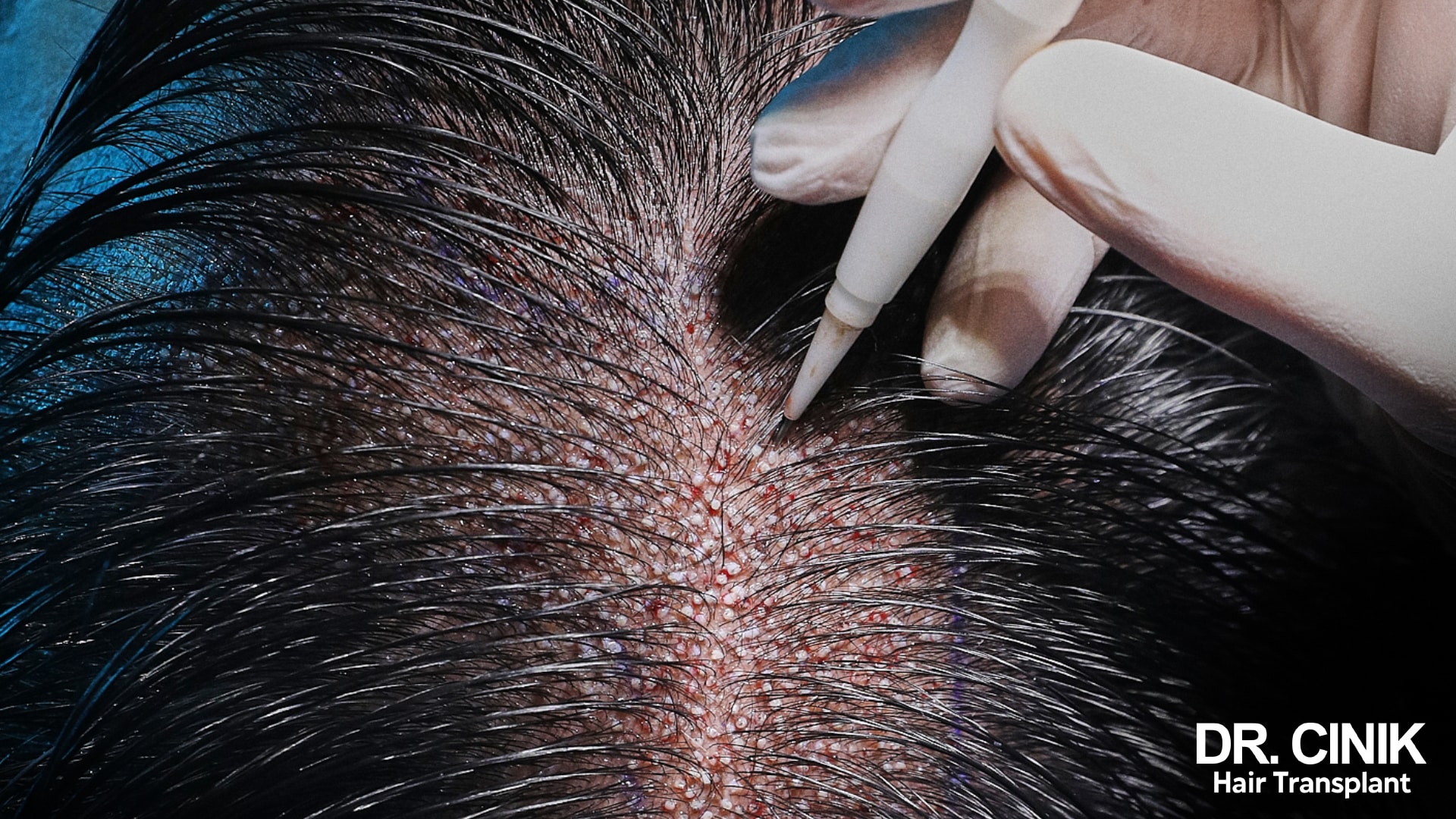
The DHI hair transplant method
Several types of hair transplants for women are available to treat female pattern baldness. One of the most popular methods is using a CHOI implant stylet to implant the grafts into the recipient area. This technique, known as DHI, allows the doctor to intervene without first creating incision channels with a blade, as is the case with the FUE technique, which allows the graft to be carried out with unequalled finesse. Also, the grafts are directly transferred from the donor area to the recipient area. They spend little time outside the body, increasing the chances of successful implantation.
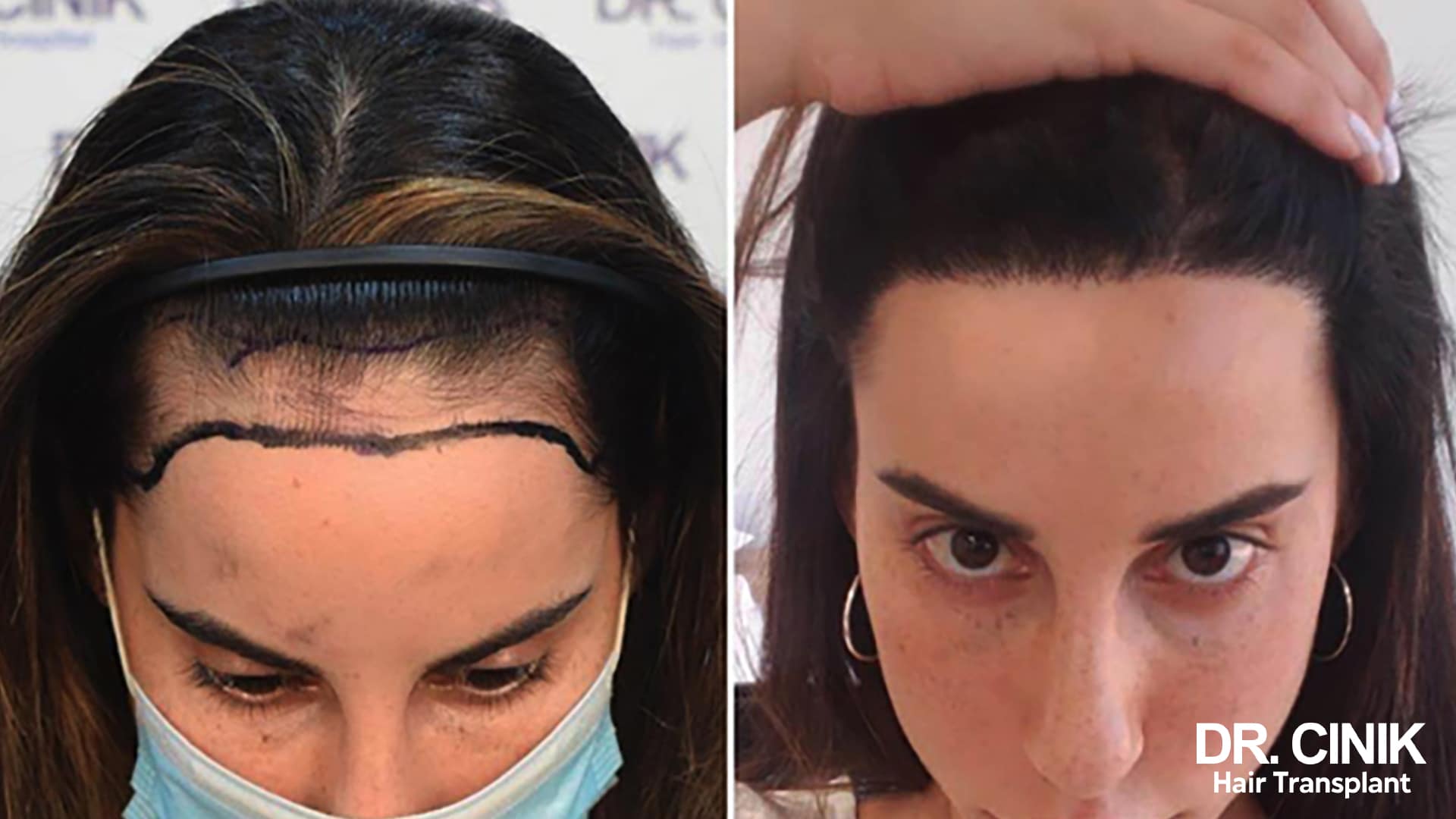
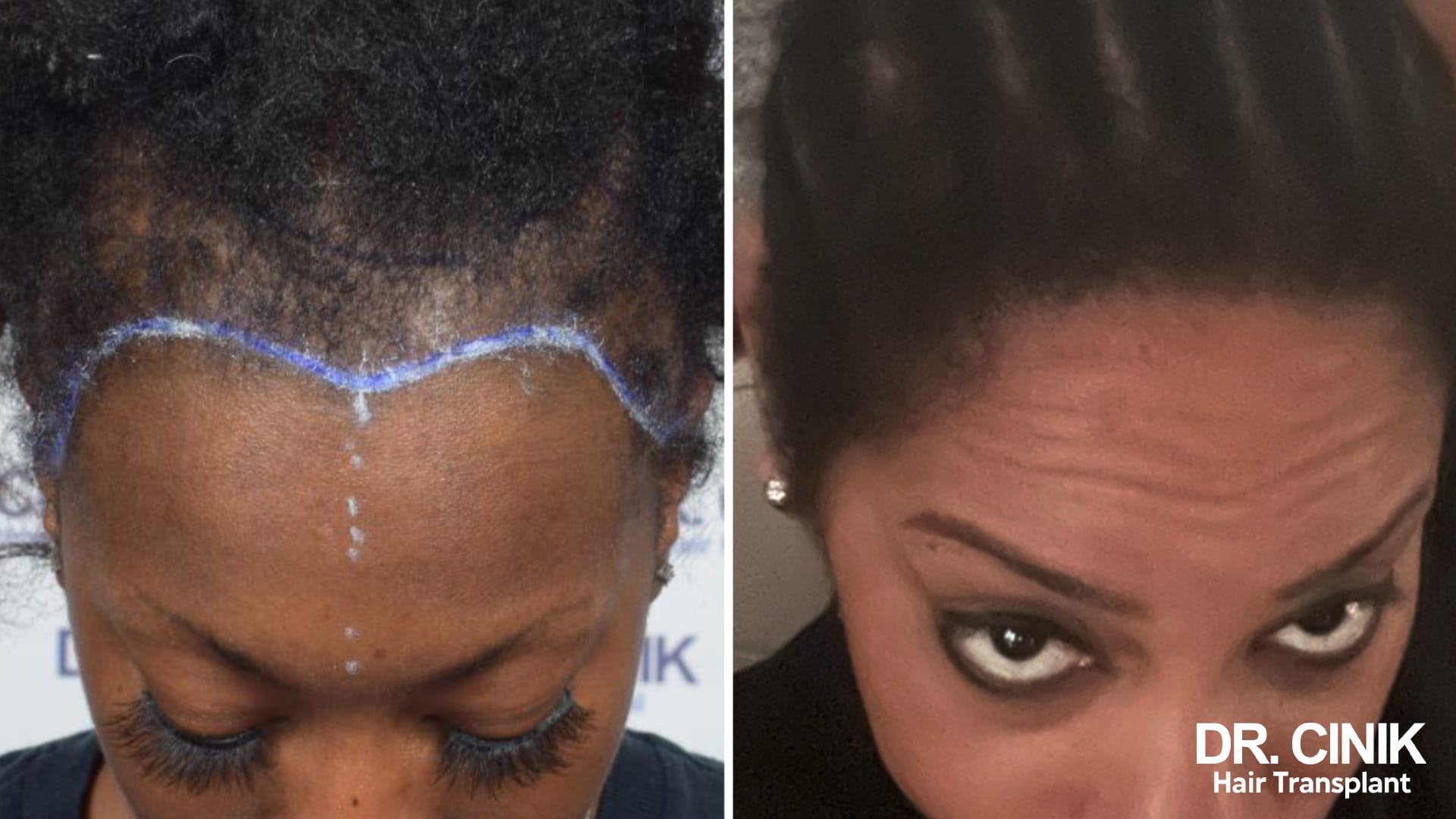
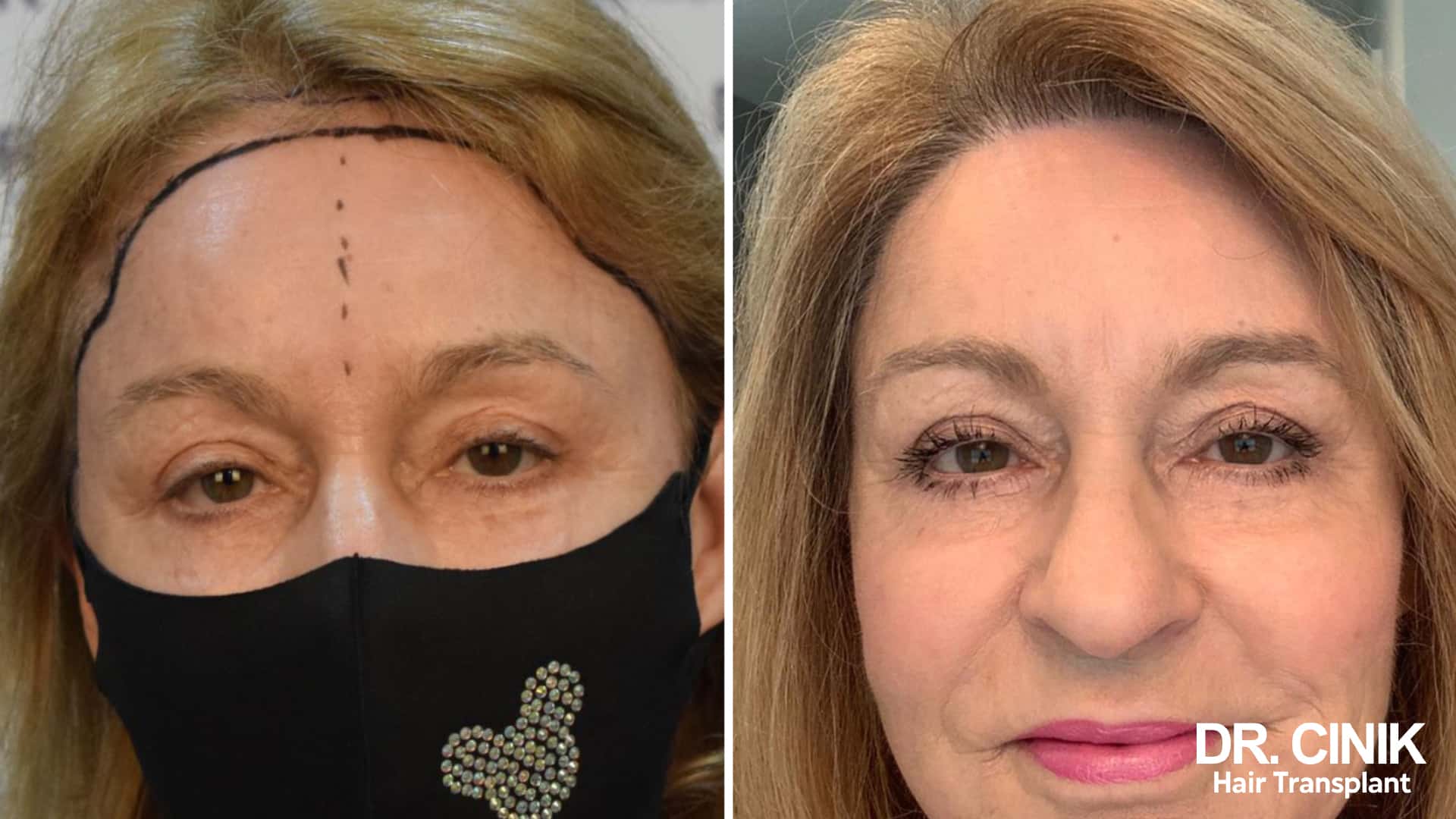
Some tips for living with androgenetic alopecia in women
If you suffer from androgenetic alopecia, a few tips can help you strengthen your scalp or stabilise the condition. However, this stabilisation is not always possible and depends on your genetic makeup.
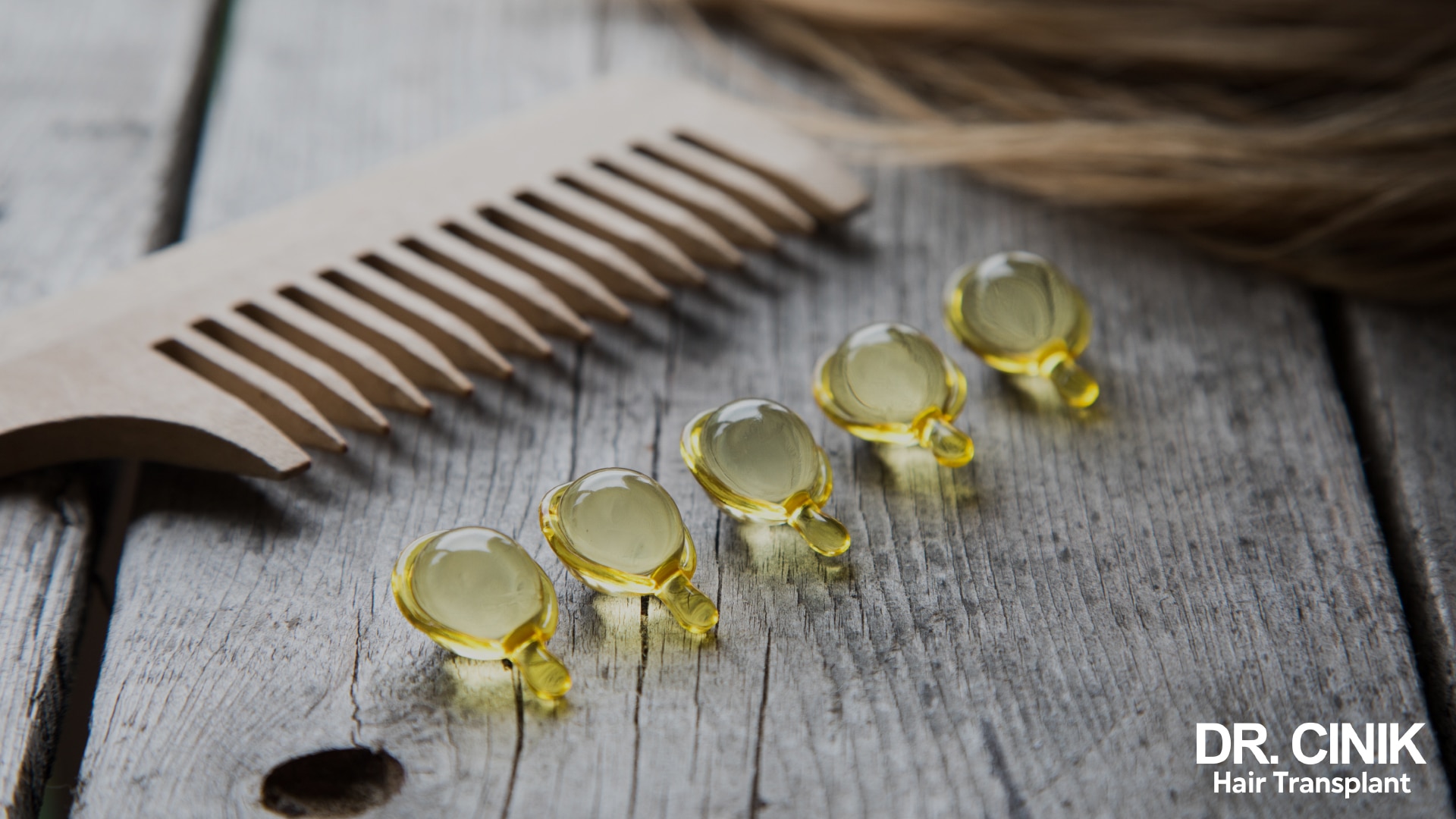
What diet should you adopt to strengthen your hair health?
Hair loss can be related to a vitamin or nutrient deficiency. Very often, a lack of iron in the body is the reason for episodes of hair loss. Remember to include iron-rich foods in your meals (liver, lentils, kidney beans and spinach, for example). Also focus on proteins and vitamins C and B.
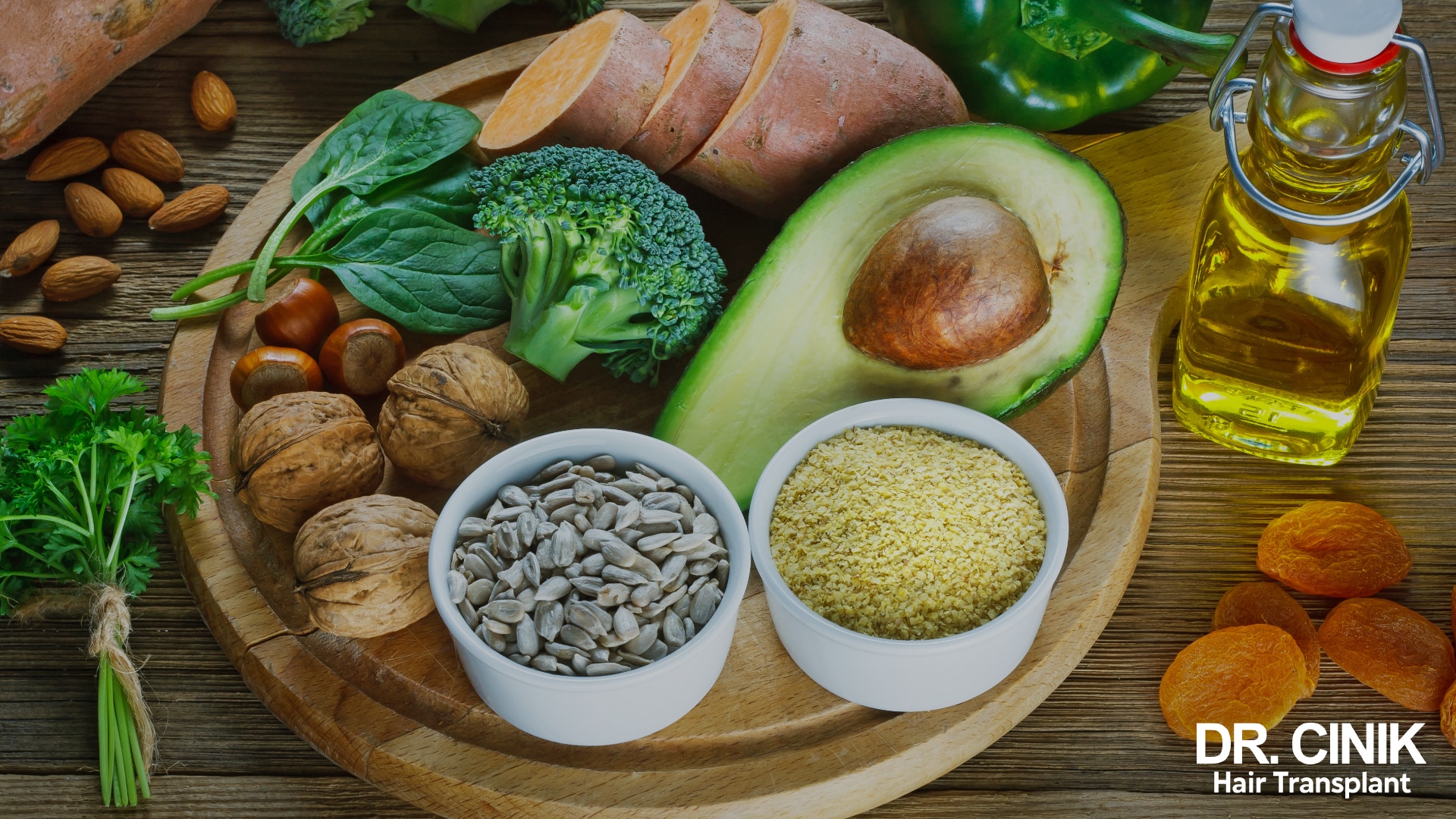
Temporary aesthetic solutions for alopecia
There are several aesthetic solutions to hide baldness and continue living a normal life. Some patients adopt the hair prosthesis or medical wig. You can also use a densifying hair powder. This product is composed of microfibres that are themselves charged with static electricity. This powder binds to the hair like a magnet, making the hair mass appear much denser.

